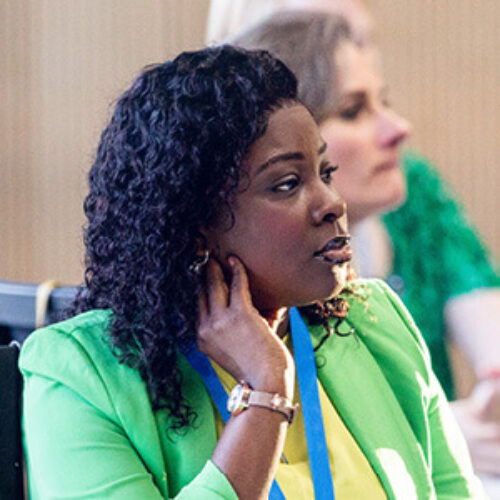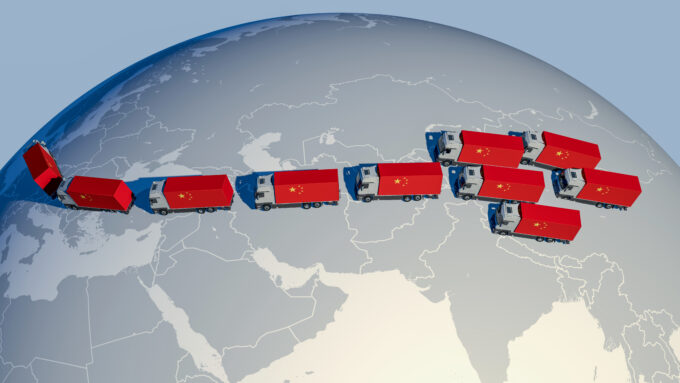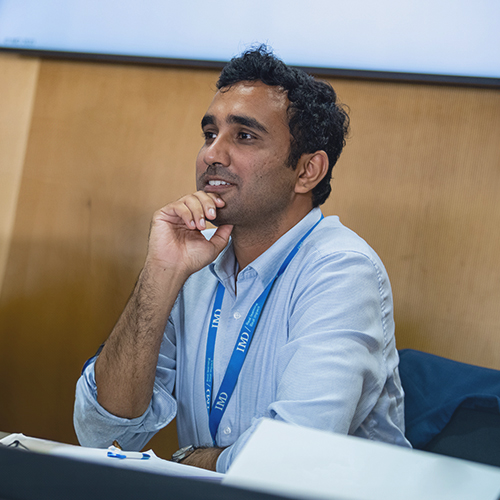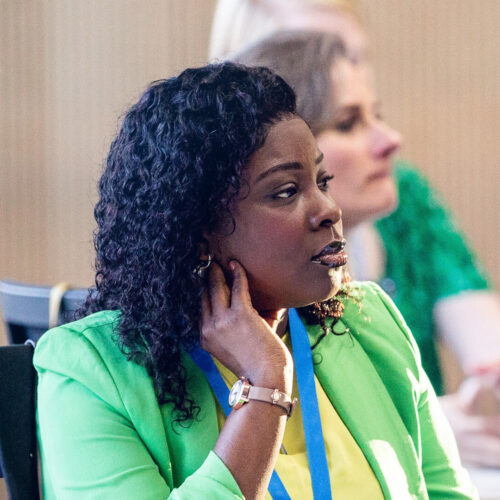
Digital sustainability: it pays to be a leader, not a laggard
Companies that excel in both digital and sustainable transformation attract a stock market premium, according to research. So, how do you tap into that value? ...

by Julia Binder Published 24 November 2023 in Sustainability • 6 min read • 
The warning is stark. Human activity on Earth has made us breach six out of the nine “planetary boundaries,” according to a study by leading scientists. Put simply, we are two-thirds of the way toward an unlivable planet. The take-make-waste linear model, which has ravaged the finite resources on which we depend, cannot continue indefinitely. It’s time to unleash the power of the circular economy.
As defined by the Ellen MacArthur Foundation, the circular economy is a system where we eliminate waste and pollution. Instead, materials are kept in circulation through maintenance, reuse, refurbishment, remanufacture, and recycling. In sum, it promotes the regeneration of nature by decoupling economic activity from the consumption of finite resources.
While many firms have expressed good intentions about wanting to limit their impact on the planet, the reality is that most still struggle to translate those intentions into concrete actions. In fact, we are moving backward when it comes to circularity. As the economy has grown, so has our appetite for materials. According to the circularity gap report 2023, only 7.2% of the global economy is now circular, down from 9.1% in 2018. This means that 90% of materials are either wasted or remain unavailable for use.
Opaque value chains, the fact that we don’t design products for reuse, and a lack of infrastructure to collect, sort, and recycle are just some of the reasons why we remain locked in a linear economy, unable to make substantial progress despite our good intentions.
Moreover, circular business models aren’t taking off because it simply doesn’t pay for companies to adopt them. Until we can make the business case, we run the risk of failing to wean our economies off our insatiable demand for new materials.

From linear to circular – unlock sustainable business opportunities
Yet hope is not lost. There are huge opportunities for companies to unlock new business opportunities while mitigating our impact on the Earth’s system. Here I highlight some ways organizations have succeeded in better connecting environmental value with economic value on the path towards circularity.
The first key principle of the circular economy is to eliminate waste and pollution. Some firms are doing this by optimizing their resource use in their operations. A case in point is Dutch company DyeCoo, which has developed a technology to dye textiles without using water or chemicals. This not only is kinder to the planet but it also represents a massive competitive advantage and business opportunity.
One of the most effective strategies to reduce our reliance on new materials is to prolong the life of our existing products. In this regard, companies can explore innovative business models that facilitate easier repair of devices. This may involve incorporating interchangeable or interoperable components, making repairs more accessible for consumers. Additionally, organizations can embrace remanufacturing practices by reclaiming products, disassembling them, repairing and cleaning components, and skillfully reassembling them for resale.
Many valuable materials end up getting wasted in the production process. Fast food giant McDonald’s stands out as an exemplar in harnessing waste and by-products. The company has found an innovative way to repurpose its used cooking oil. Rather than discarding it, McDonald’s sells it to Neste in Finland where, utilizing advanced refining processes, the oil is transformed into renewable fuels. These fuels, in turn, power McDonald’s trucks, offering a sustainable and emission-free solution.

In the circular economy, regeneration involves preserving renewable resources, whether by returning valuable nutrients to the soil or reusing renewable energy. Some companies are already capitalizing on this by charging more for products that contribute to environmental restoration and regeneration. Research indicates a growing consumer willingness to pay a premium for regenerative products. Another avenue for realizing economic benefits from regeneration is through strategic investments in regenerative infrastructure to protect the resources we have available. A good illustration is agrivoltaic farming, whereby solar panels are placed on agricultural land. Beyond merely generating sustainable energy, this approach offers a dual benefit: the solar panels act as a protective shield, mitigating the impact of excessive sunlight on crops. This not only underscores the harmonious integration of economic and ecological considerations but also exemplifies an economical solution wherein regenerative infrastructure contributes both to energy sustainability and crop resilience.
Why do we all need to own products that we might rarely use when we could lease or rent them for a limited time? The everything-as-a-service (XaaS) model marks a transformative shift in consumer behavior and business strategies, challenging the conventional notion of ownership. This model encourages the idea that instead of owning products that might be infrequently used, individuals and businesses can access the service of a product. In the context of a circular economy, the shift towards service models becomes a crucial enabler for truly circular products. By embracing services over ownership, producers can retain control and ownership of valuable materials within products.

Manage social, political, and regulatory dynamics to accelerate your sustainability transformation.
This is the sentiment behind several maturing service business models. Sports retailer Decathlon, for example, offers short-term product hire for a range of sporting equipment, while cities are now awash with car and scooter-sharing services.
Technology, design, and customer-centricity will all be important levers in powering the circular economy of the future. From my perspective, a major roadblock right now is that products are still designed to be disposable. If we are to truly capture value and move away from the entrenched thinking that keeps us locked in a take-make-waste economic model, we need to start thinking about how to reduce, reuse, and repair products at the design stage.
Shifting to a circular economy is a complex and interconnected challenge that extends beyond the capabilities of any single company. A collaborative approach involving multiple stakeholders across various sectors is imperative for a successful transition. Unlike traditional linear business models, embracing a circular economy requires a systemic change that involves not only rethinking product design and manufacturing but also reshaping supply chains, consumption patterns, and waste management practices.
One crucial aspect is the need for companies to transcend the traditional mindset of competition and embrace collaboration. Companies must recognize that the circular economy is not a zero-sum game; success for one company doesn’t come at the expense of another. Instead, it necessitates a collective effort to redesign entire systems and value chains for sustainability. As the African proverb wisely notes, “If you want to go fast, go alone. If you want to go far, go together.”
This article was adapted from a keynote speech at the Responsible Leadership Conference on Sustainability and Responsibility and is based on the forthcoming book “The Circular Business Revolution” by Julia Binder and Manuel Braun (forthcoming at Pearson, 2024).

Professor of Sustainable innovation and Business Transformation at IMD
Julia Binder, Professor of Sustainable Innovation and Business Transformation, is a renowned thought leader recognized on the 2022 Thinkers50 Radar list for her work at the intersection of sustainability and innovation. As Director of IMD’s Center for Sustainable and Inclusive Business, Binder is dedicated to leveraging IMD’s diverse expertise on sustainability topics to guide business leaders in discovering innovative solutions to contemporary challenges. At IMD, Binder serves as Program Director for Creating Value in the Circular Economy and teaches in key open programs including the Advanced Management Program (AMP), Transition to Business Leadership (TBL), TransformTech (TT), and Leading Sustainable Business Transformation (LSBT). She is involved in the school’s EMBA and MBA programs, and contributes to IMD’s custom programs, crafting transformative learning journeys for clients globally.

From linear to circular – unlock sustainable business opportunities

17 July 2024 • by Michael R. Wade, Evangelos Syrigos in Sustainability
Companies that excel in both digital and sustainable transformation attract a stock market premium, according to research. So, how do you tap into that value? ...

11 July 2024 • by Stéphane J. G. Girod in Sustainability
A series of watershed events forced CHANEL out of its comfort zone, culminating in the launch of CHANEL Mission 1.5°. With this new strategy, the luxury fashion house embarked on a journey...

5 July 2024 • by Avni Shah in Sustainability
Creative industries have a key role to play in creating positive social change. Here are six key insights to help them achieve their goals. ...

3 July 2024 • by Richard Baldwin, Salvatore Cantale in Sustainability
The EU Corporate Sustainability Reporting Directive (CSRD) will impose comprehensive and standardized sustainability reporting responsibilities on firms, adding unprecedented complexity to mergers and acquisitions. ...
Explore first person business intelligence from top minds curated for a global executive audience